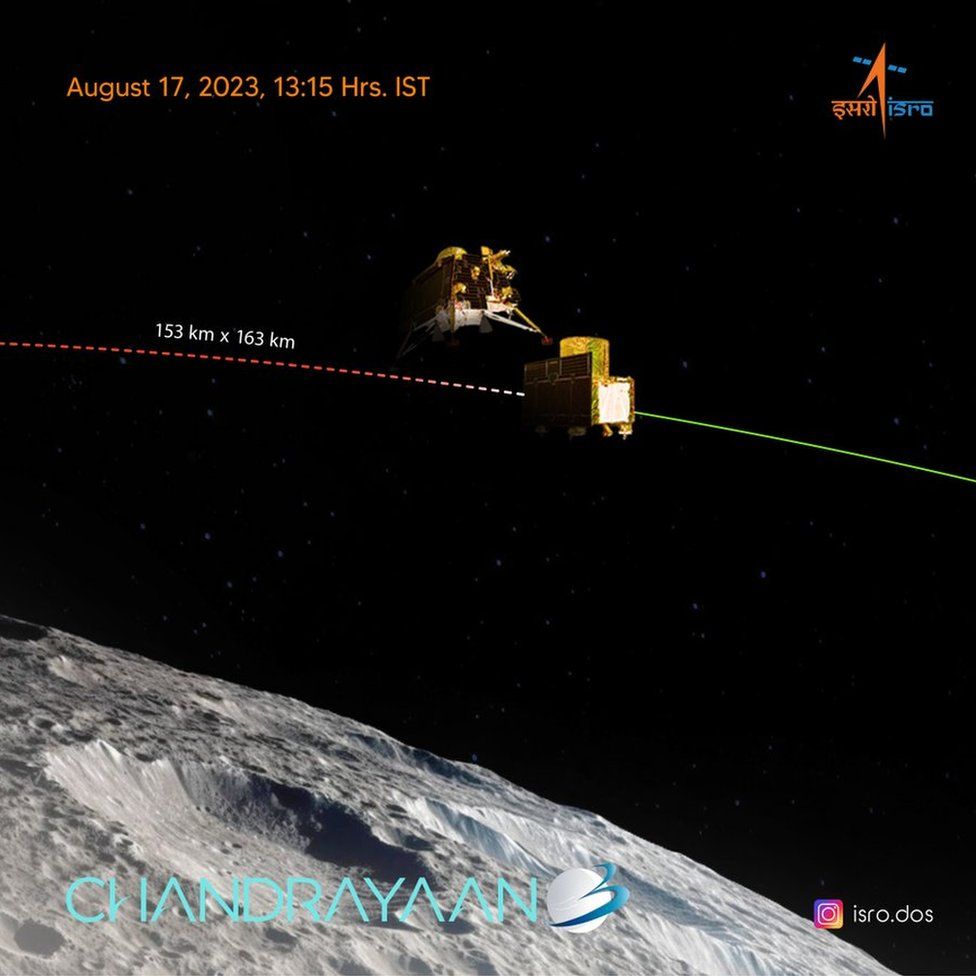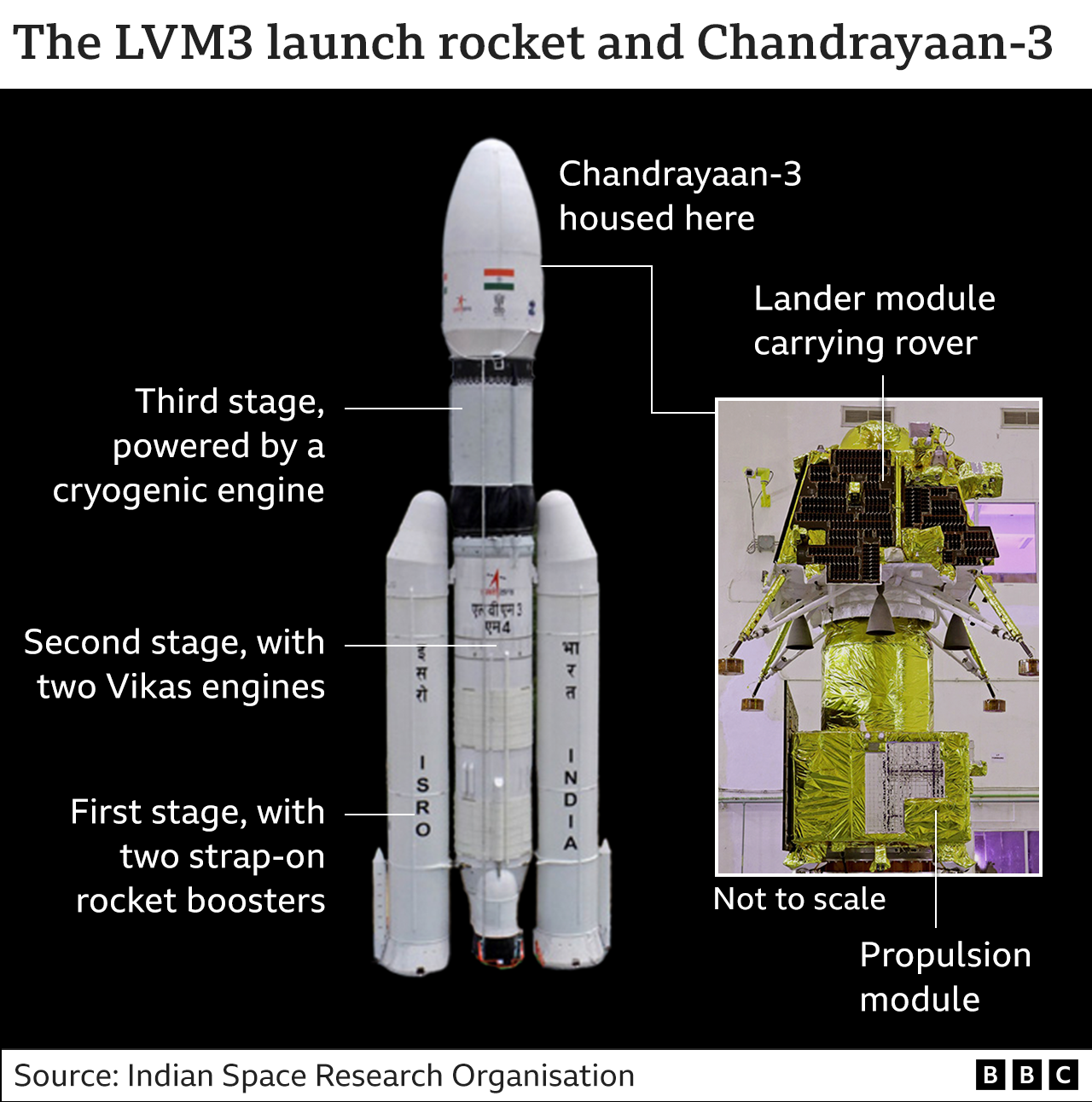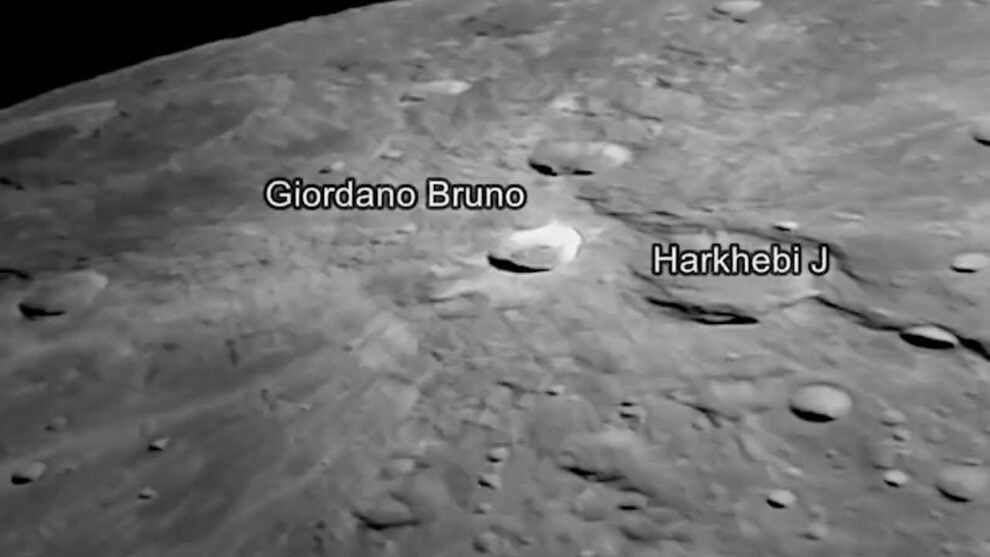India’s space agency has released latest images of the Moon as its third lunar mission starts descending towards the little-explored south pole.
The pictures have been taken by Vikram, Chandrayaan-3’s lander, which began the last phase of its mission on Thursday.
Vikram, which carries a rover in its belly, is due to land near the south pole on 23 August.
The lander detached from the propulsion module, which carried it close to the Moon, on Thursday.
The black-and-white images show close-ups of rocks and craters on the Moon’s surface. One of the photographs shows the propulsion module too.
Chandrayaan-3 and Russia’s Luna-25 are among the two spacecraft headed towards the Moon’s south pole and both are expected to land next week.
Luna-25 – Russia’s first Moon mission since 1976, when it was part of the Soviet Union – was launched last week and is expected to make history by making a soft landing on 21st or 22nd August, just days before the Indian touchdown. If it succeeds, Chandrayaan-3 will have to settle for being a close second in reaching the south pole.
India, however, will still be only the fourth country to achieve a soft landing on the Moon after the US, the former Soviet Union and China.
Indian Space Research Organisation (Isro) said on Friday that the lander module had begun its descent to a lower orbit.

Chandrayaan-3, the third in India’s programme of lunar exploration, is expected to build on the success of its earlier Moon missions.
It comes 13 years after the country’s first Moon mission in 2008, which discovered the presence of water molecules on the parched lunar surface and established that the Moon has an atmosphere during daytime.
Chandrayaan-2 – which also comprised an orbiter, a lander and a rover – was launched in July 2019 but it was only partially successful. Its orbiter continues to circle and study the Moon even today, but the lander-rover failed to make a soft landing and crashed during touchdown.
Isro chief Sreedhara Panicker Somanath has said that the space agency had carefully studied the data from its crash and carried out simulation exercises to fix the glitches in Chandrayaan-3, which weighs 3,900kg and cost 6.1bn rupees ($75m; £58m). The lander module weighs about 1,500kg, including the 26kg-rover Pragyaan.
The south pole of the Moon is still largely unexplored – the surface area that remains in shadow there is much larger than that of the Moon’s north pole, and scientists say it means there is a possibility of water in areas that are permanently shadowed.
One of the major goals of both Chandrayaan-3 and Luna-25 is to hunt for water ice which, scientists say, could support human habitation on the Moon in future. It could also be used for supplying propellant for spacecraft headed to Mars and other distant destinations.

Source : BBC









